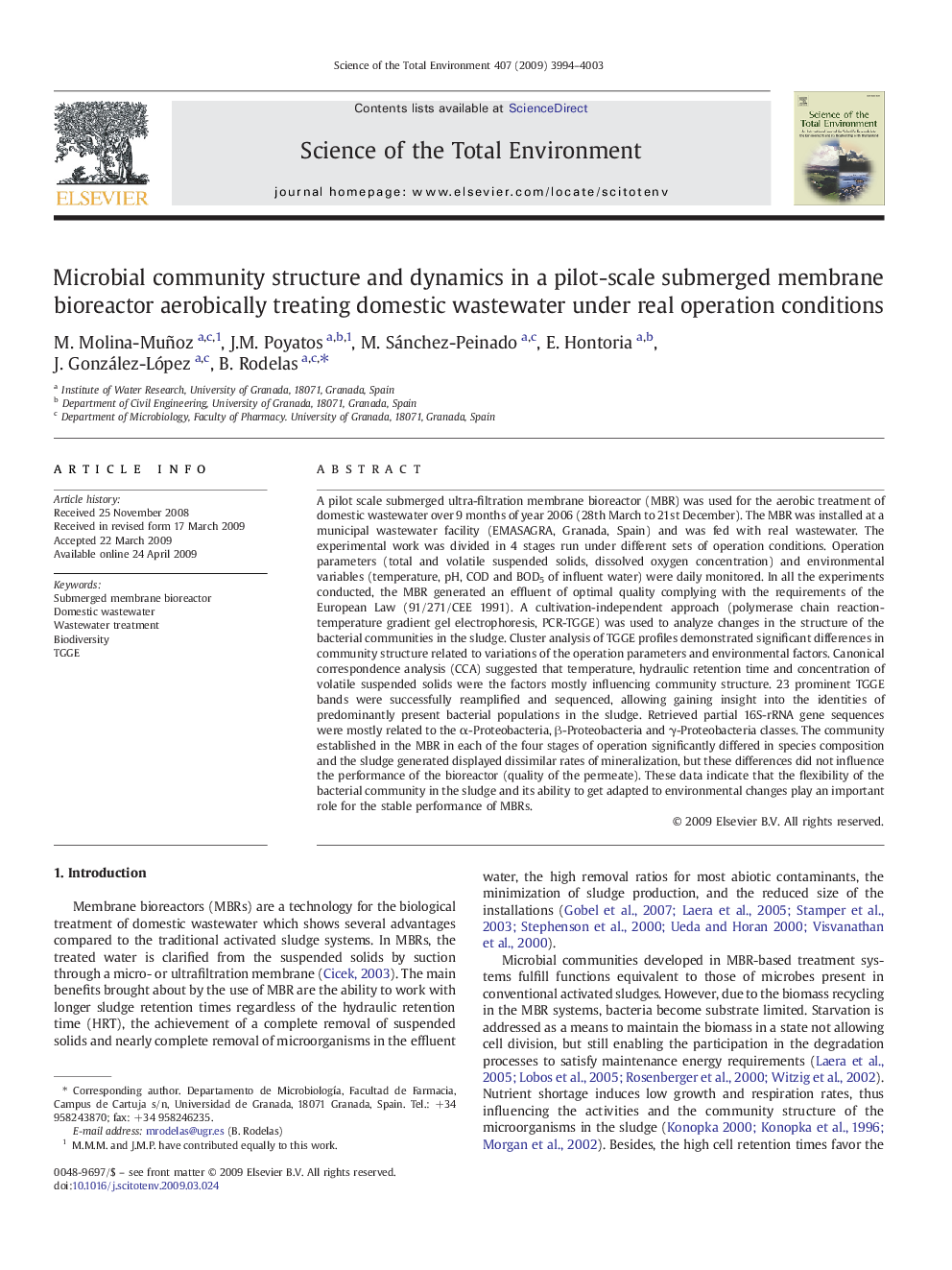| کد مقاله | کد نشریه | سال انتشار | مقاله انگلیسی | نسخه تمام متن |
|---|---|---|---|---|
| 4431419 | 1619897 | 2009 | 10 صفحه PDF | دانلود رایگان |
عنوان انگلیسی مقاله ISI
Microbial community structure and dynamics in a pilot-scale submerged membrane bioreactor aerobically treating domestic wastewater under real operation conditions
دانلود مقاله + سفارش ترجمه
دانلود مقاله ISI انگلیسی
رایگان برای ایرانیان
کلمات کلیدی
موضوعات مرتبط
علوم زیستی و بیوفناوری
علوم محیط زیست
شیمی زیست محیطی
پیش نمایش صفحه اول مقاله

چکیده انگلیسی
A pilot scale submerged ultra-filtration membrane bioreactor (MBR) was used for the aerobic treatment of domestic wastewater over 9 months of year 2006 (28th March to 21st December). The MBR was installed at a municipal wastewater facility (EMASAGRA, Granada, Spain) and was fed with real wastewater. The experimental work was divided in 4 stages run under different sets of operation conditions. Operation parameters (total and volatile suspended solids, dissolved oxygen concentration) and environmental variables (temperature, pH, COD and BOD5 of influent water) were daily monitored. In all the experiments conducted, the MBR generated an effluent of optimal quality complying with the requirements of the European Law (91/271/CEE 1991). A cultivation-independent approach (polymerase chain reaction-temperature gradient gel electrophoresis, PCR-TGGE) was used to analyze changes in the structure of the bacterial communities in the sludge. Cluster analysis of TGGE profiles demonstrated significant differences in community structure related to variations of the operation parameters and environmental factors. Canonical correspondence analysis (CCA) suggested that temperature, hydraulic retention time and concentration of volatile suspended solids were the factors mostly influencing community structure. 23 prominent TGGE bands were successfully reamplified and sequenced, allowing gaining insight into the identities of predominantly present bacterial populations in the sludge. Retrieved partial 16S-rRNA gene sequences were mostly related to the α-Proteobacteria, β-Proteobacteria and γ-Proteobacteria classes. The community established in the MBR in each of the four stages of operation significantly differed in species composition and the sludge generated displayed dissimilar rates of mineralization, but these differences did not influence the performance of the bioreactor (quality of the permeate). These data indicate that the flexibility of the bacterial community in the sludge and its ability to get adapted to environmental changes play an important role for the stable performance of MBRs.
ناشر
Database: Elsevier - ScienceDirect (ساینس دایرکت)
Journal: Science of The Total Environment - Volume 407, Issue 13, 15 June 2009, Pages 3994-4003
Journal: Science of The Total Environment - Volume 407, Issue 13, 15 June 2009, Pages 3994-4003
نویسندگان
M. Molina-Muñoz, J.M. Poyatos, M. Sánchez-Peinado, E. Hontoria, J. González-López, B. Rodelas,